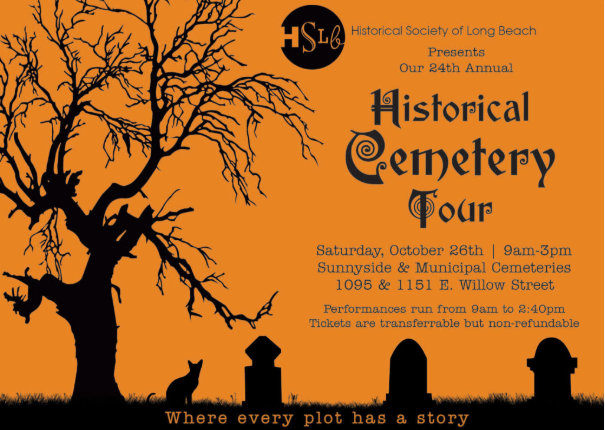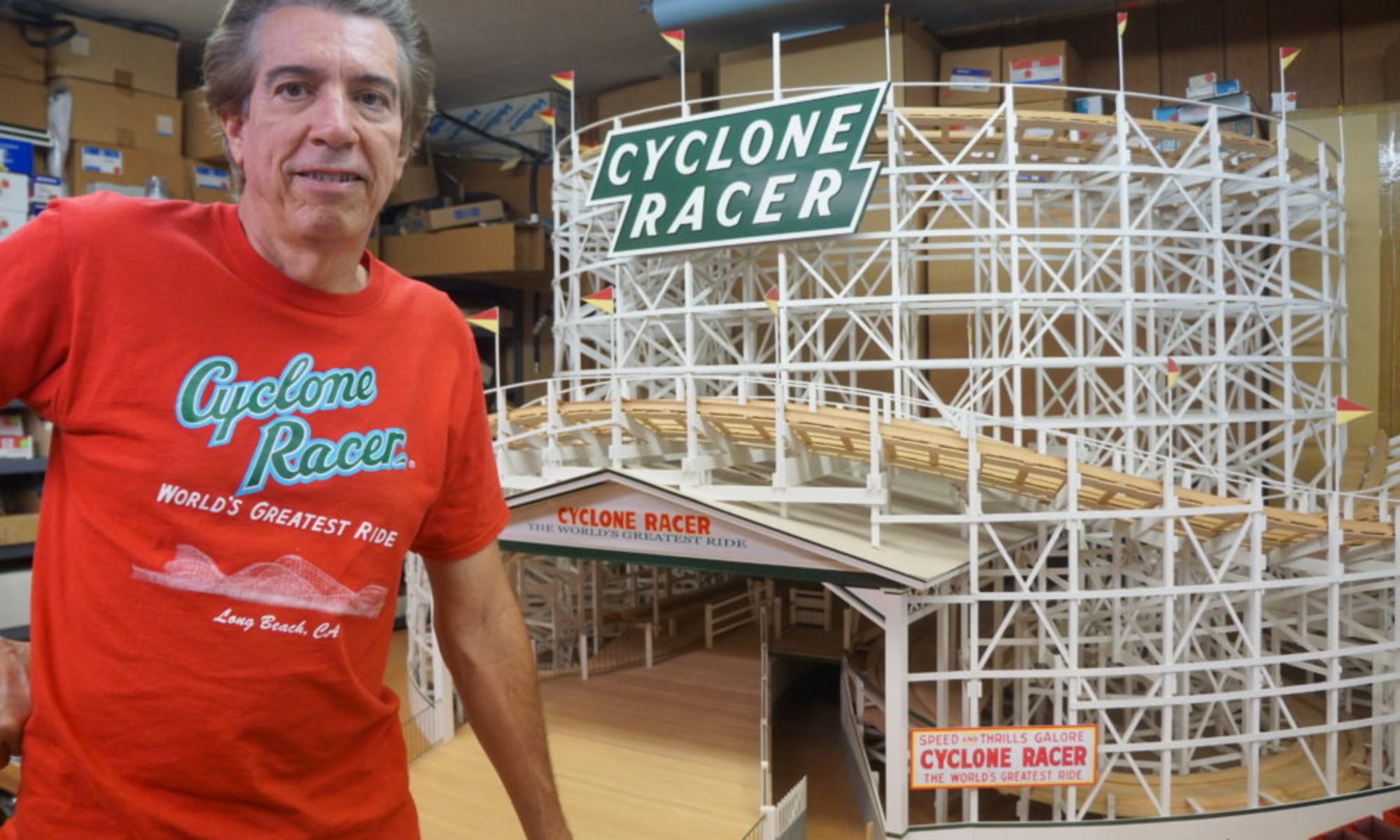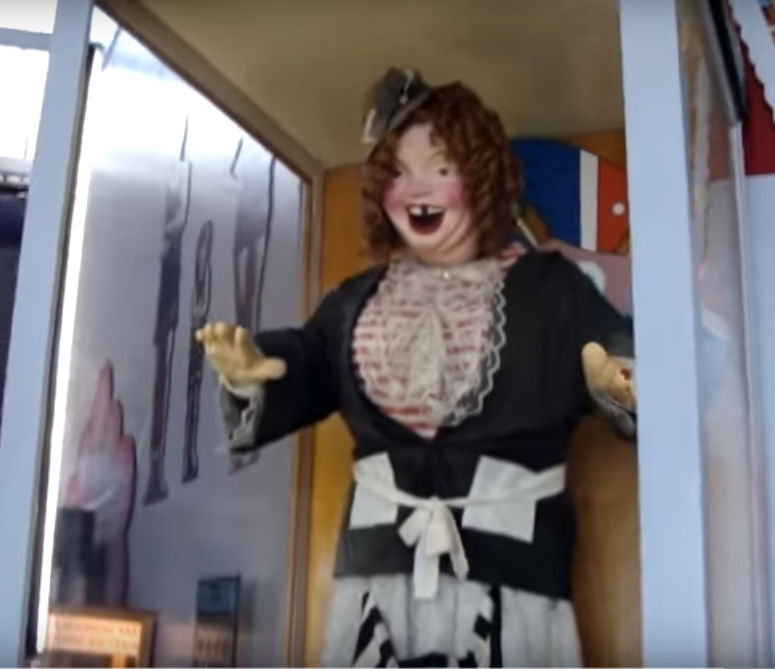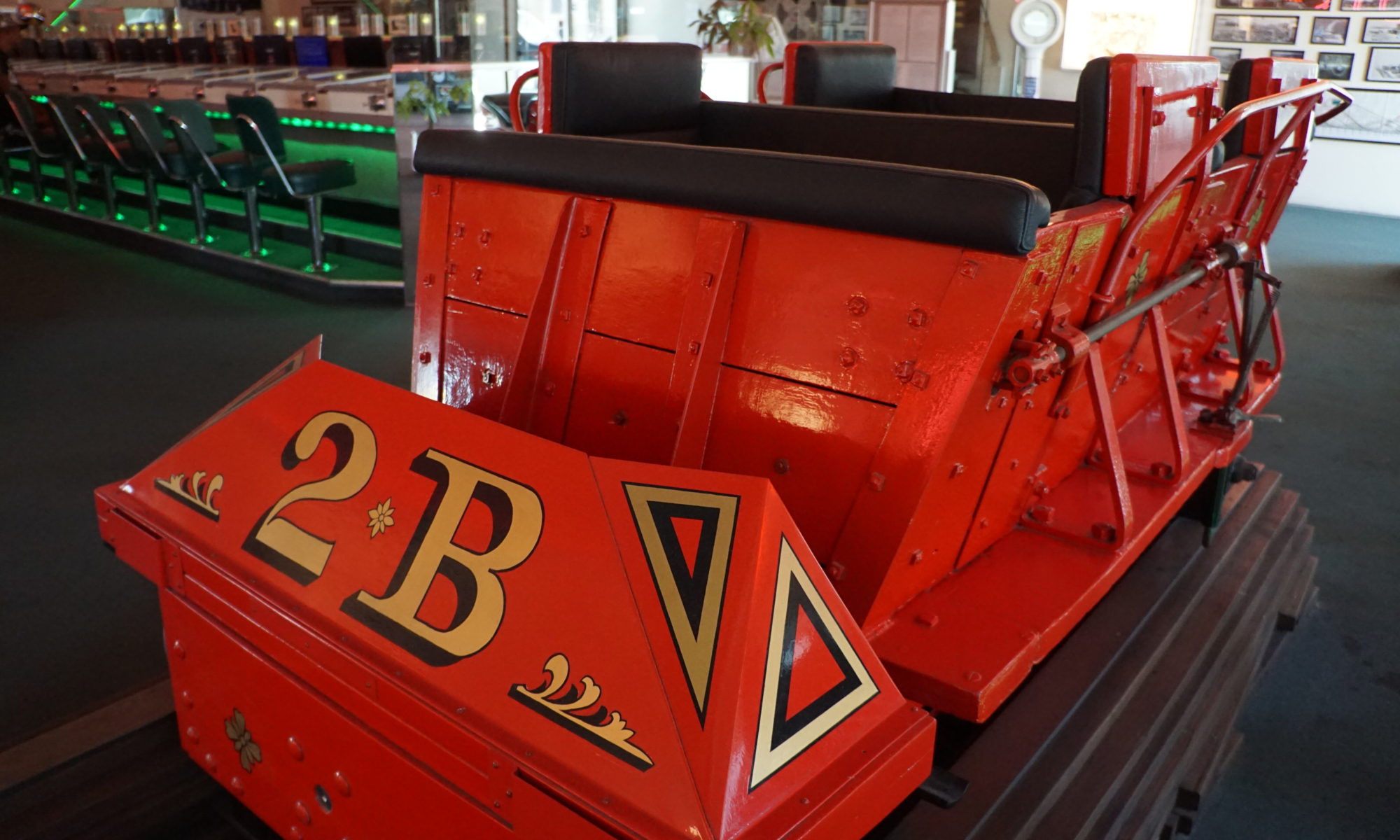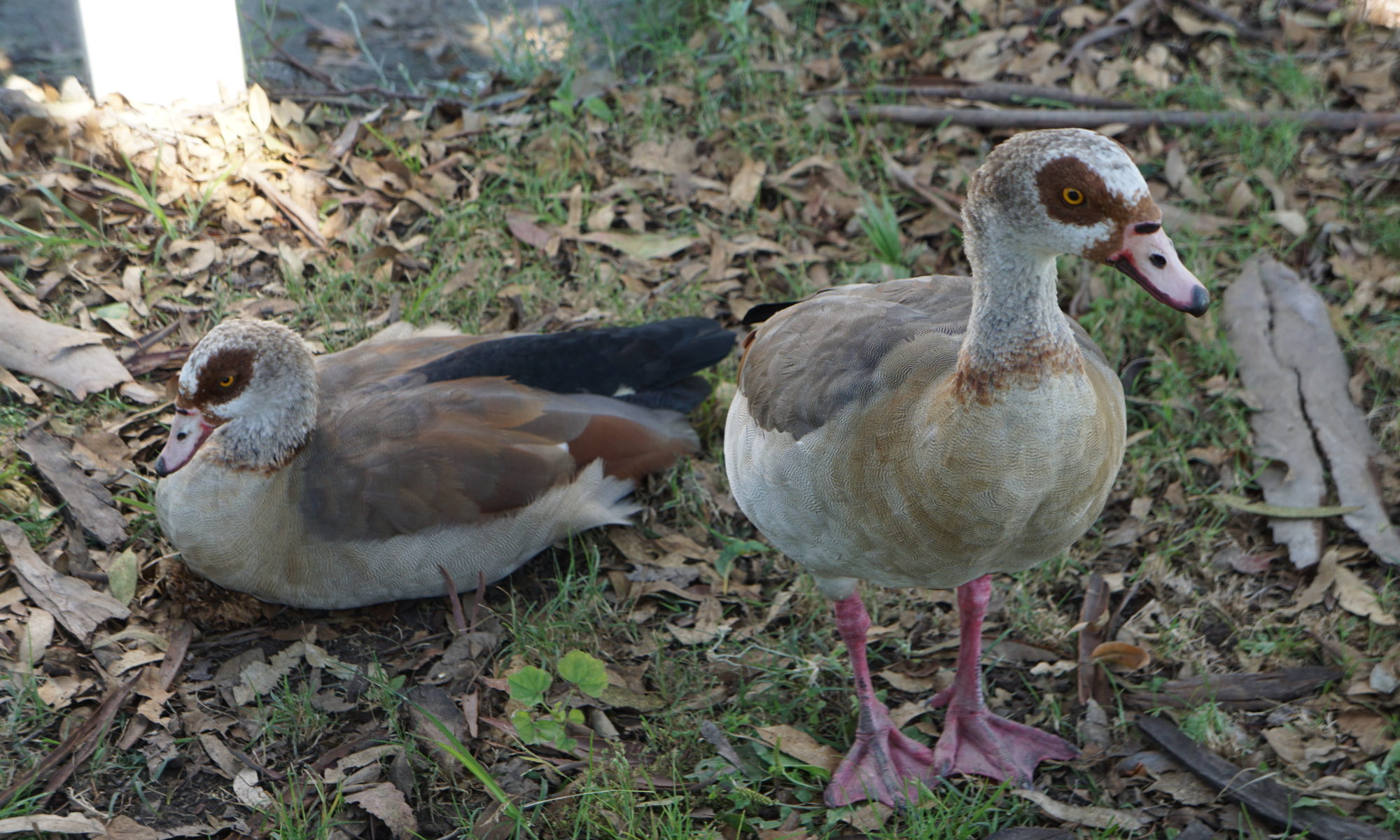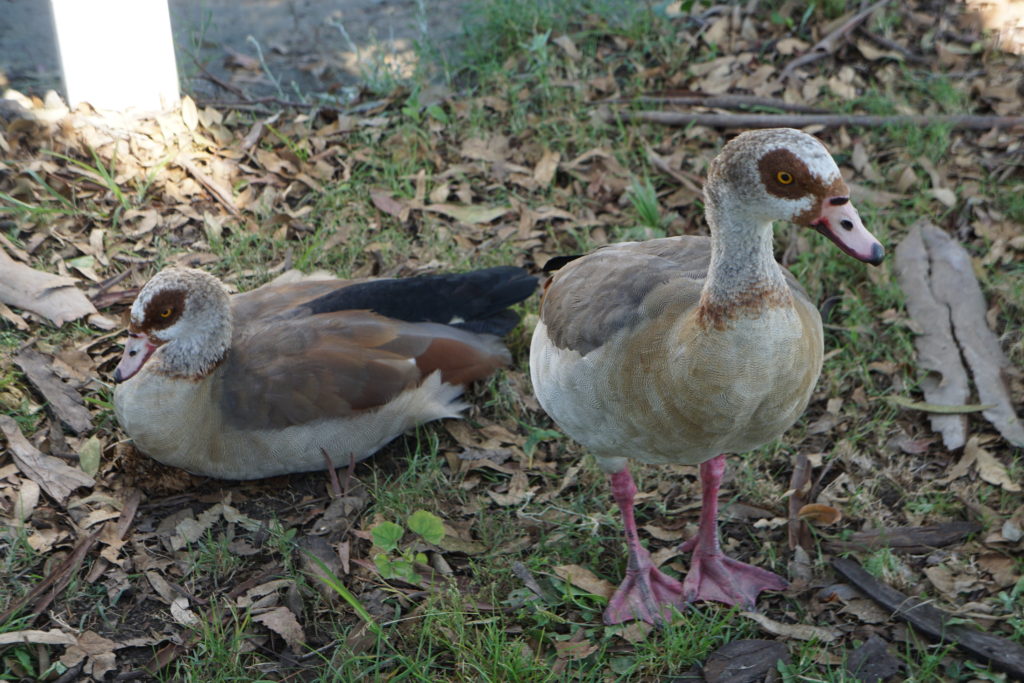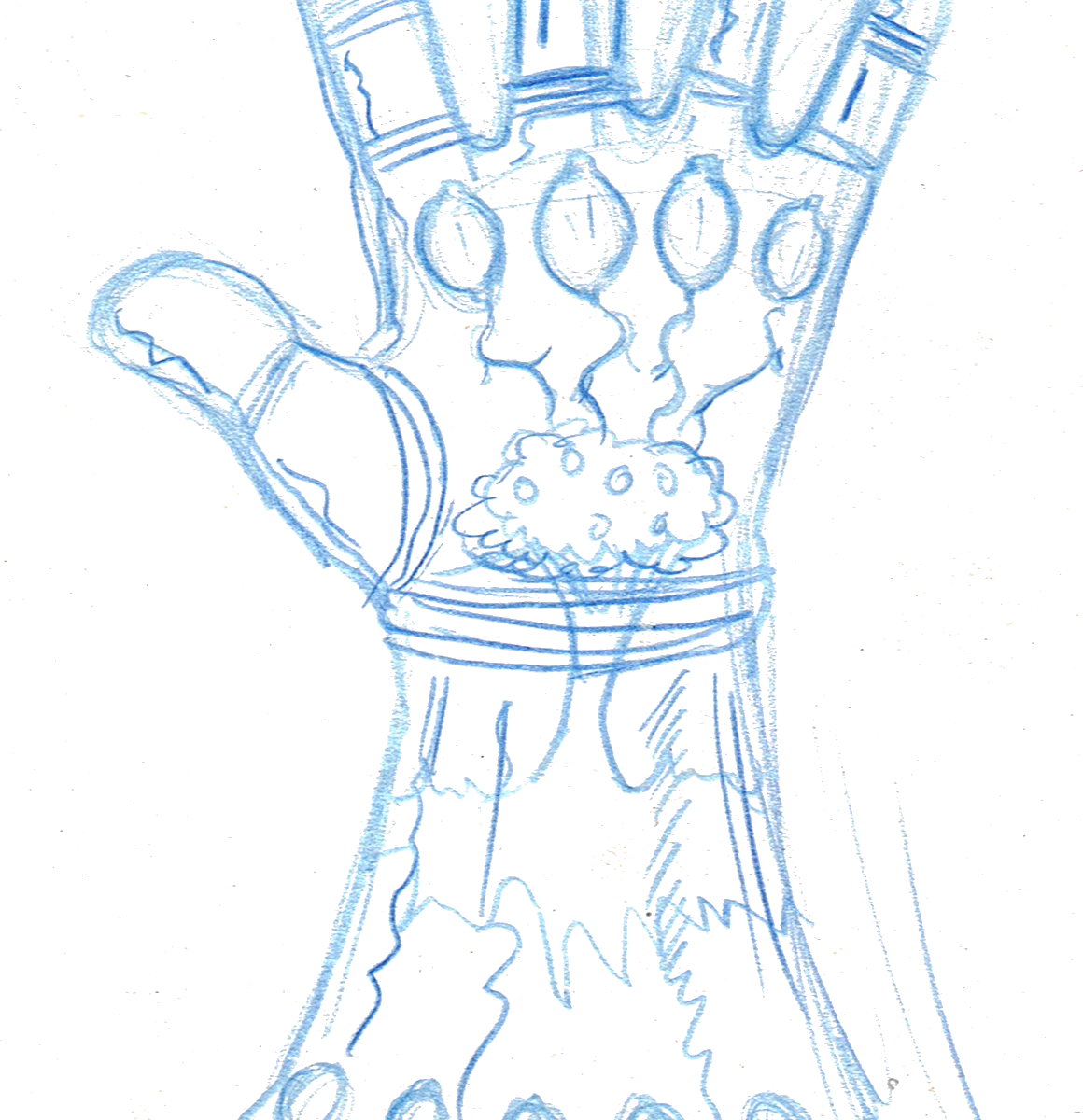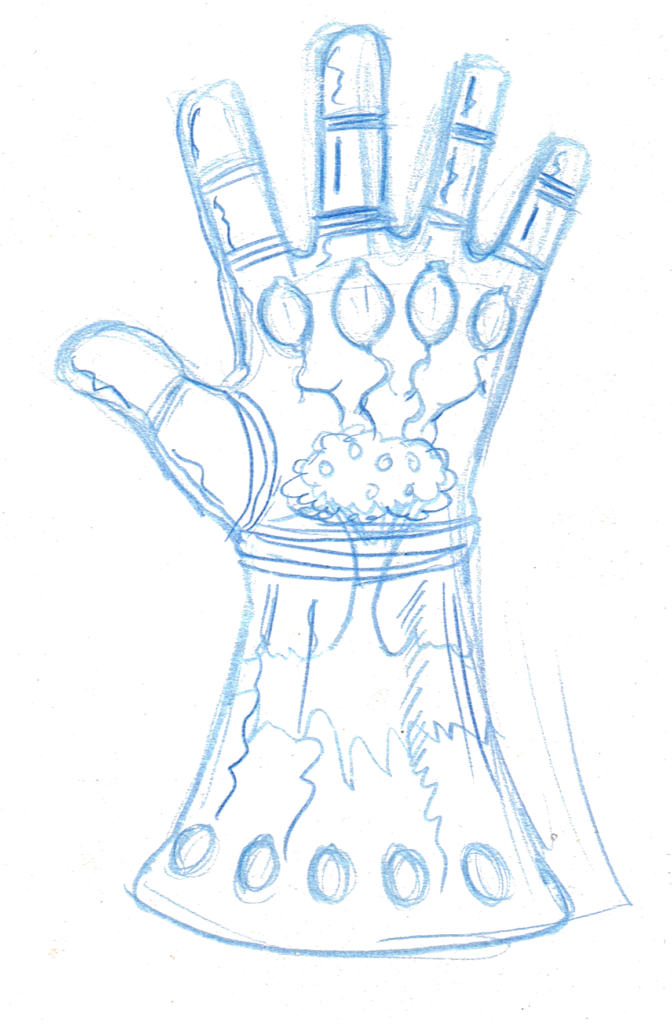The last remaining car of the Cyclone Racer can be seen at Looff’s Pike Museum at 2500 Long Beach Blvd.
The Cyclone Racer Roller Coaster was conceived of by Fred Church and built by Harry Traver.(1)
The Cyclone Racer was a two train racing roller coaster that graced the Long Beach Pike between 1930 and 1968. Built to replace the JackRabbit Racer in 1930, the Cyclone Racer was 94 feet tall and had 17 drops(2). This wooden marvel was built on a pier that extended a couple of hundred feet over the water and, looking down, you could see the ocean through purposeful gaps in the pier flooring, making the ride even more thrilling. (3)
The turns and drops were designed so as to make you feel as if you would be thrown off of the car and into the Pacific Ocean. It was indeed a race as, although two trains left the station at the same time, the winning train varied and depended partly upon the load of the passengers in the car. (4)
It appears that there might have been seat belts that could be fastened(5) but lap bars had not yet been invented(6). Note: Upon conversation with Larry Osterhoudt, the part of the Leave It To Beaver episode where I observed a seat belt was observed being fastened, was filmed on the Pacific Ocean Park Pier in Santa Monica. Other parts were filmed on the Cyclone Racer.
The roller coaster was featured in episodes of “Abbott and Costello” and “Leave it to Beaver” (7).
Rides cost 25c for most of the time the Cyclone Racer was operational. Near the end, the cost was increased to 35 c. (8) Note: Later conversation with Larry Osterhoudt shared that the initial cost was 15c. We observed together a photo with a 10c re-ride sign.
The braking was initially done through exertion of physical force, requiring the ride to be operated by men. During the war, this was changed over to air-braking, as men were sent to war, and women took over the role of ride operator. (9)
Larry Osterhoudt, who runs website cycloneracer.com, is interviewed extensively for the video “The Cyclone Racer”, which provided much of the content for this post. Actual video of the ride in action is downloadable from this website, along with considerable amount of additional information for your reading pleasure.
I was able to check out the CD “The Cyclone Racer” from the Bayshore Library in Long Beach. I could not find a copy available for purchase.
In 2003 a bridge, which design evokes memories of the Cyclone Racer, was built over Shoreline Drive. The story of that bridge is very interesting, you can read about it in the Los Angeles Times.
IF you love wooden roller coasters, you can still see one up close at Knott’s Berry Farm. Called the Ghost Rider, it was built in 1998 and appears to still be operational.
References
(1), (2) – https://www.kcet.org/shows/lost-la/a-walk-along-long-beachs-gaudy-tawdry-bawdy-pike
(3), (4), (5), (6), (7), (8), (9) the Cyclone Racer on the PIKE World’s Greatest Thrill Ride Video, Authentic History Productions, 2004
